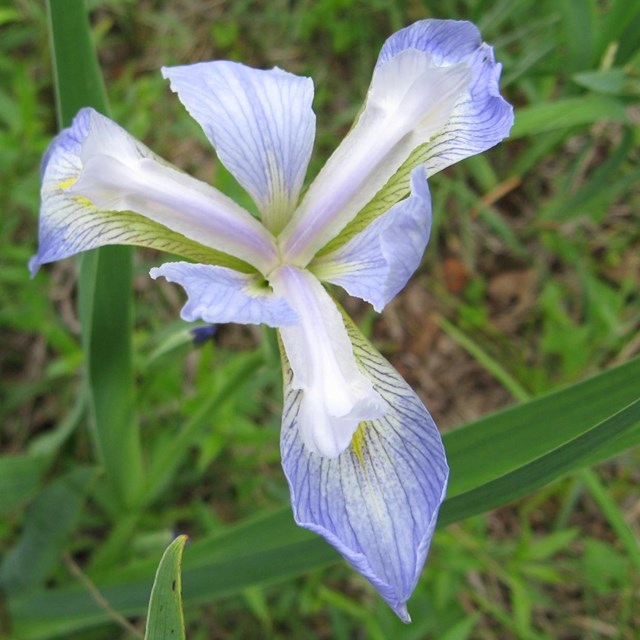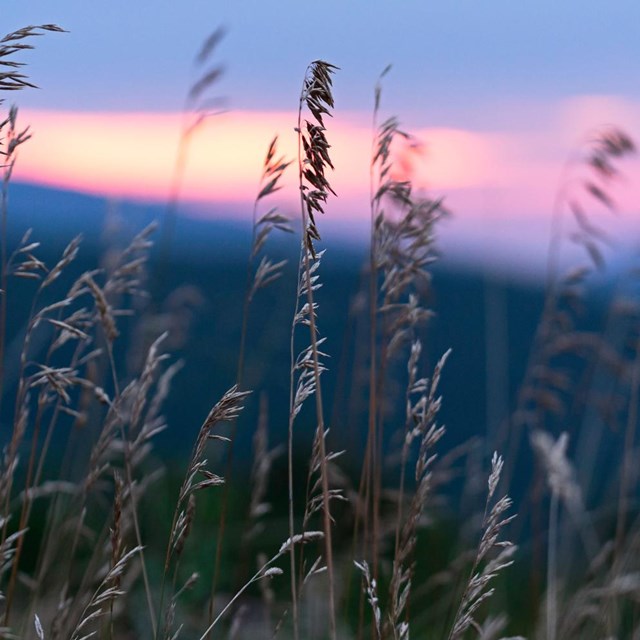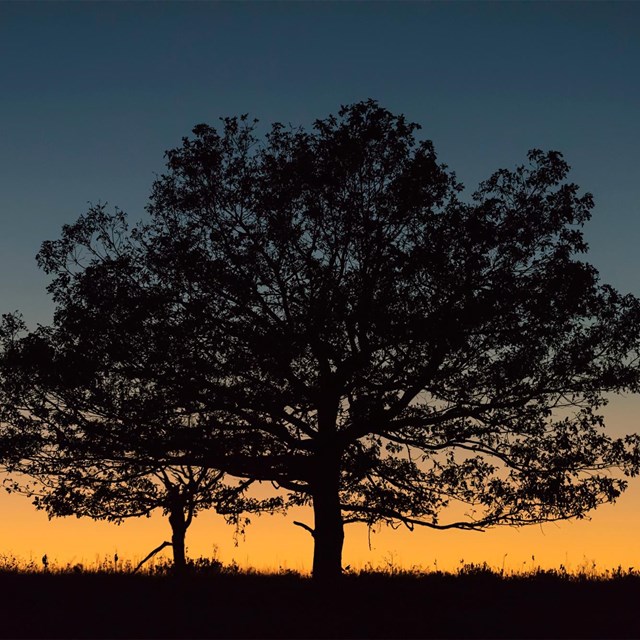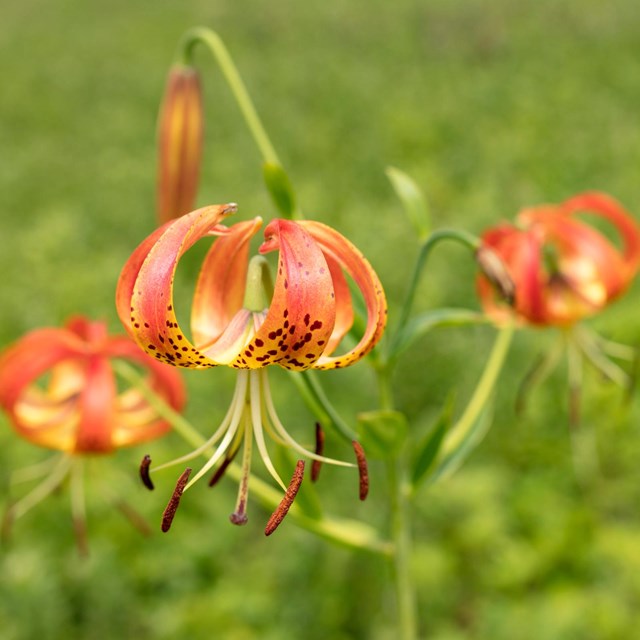|
Shenandoah National Park is home to a wonderful variety of plant life. The park's Mid-Atlantic location straddles conditions of both the Northern and Southern Appalachian mountains allowing everything from lichens to oak trees to thrive. Over 1400 species of vascular plants are found in the park, though fewer than one hundred of these are the familiar trees and shrubs most noticeable to park visitors. The forests within Shenandoah National Park are generally classified as "oak-hickory", yet they contain far more than just oak and hickory trees to discover. The park's 70 mile length and 3500 foot elevation range create numerous habitats able to support a variety of forest cover types. Some of the strongest influences determining what plants grow in certain areas of Shenandoah National Park are elevation, the available moisture, the bedrock geology, and the directions of slope exposure (slope aspect), and soil conditions. Chestnut and red oak forest are common in the park, but other forest types such tulip poplar, cove hardwood, and even small areas of spruce-fir forest, may also be found when exploring the park's hillsides, sheltered stream valleys, and peaks. Forest names such as cove hardwood and chestnut oak are only a starting point to describe the variety of plants present within Shenandoah National Park. The forests would be incomplete without the seemingly countless herb, fern, and shrub species found beneath the trees. Trillium, jack-in-the-pulpit, interrupted fern, blueberries, azaleas, and lady slipper orchids are just a few examples of the numerous smaller species that enrich the understory. Explorations into the forests of Shenandoah National Park provide tremendous opportunities for discovery to both the casual and serious botanical enthusiast. See more on our Virtual Ranger programs. NPSpecies ListsNPSpecies is a consolidated database where you can find the latest information on any species from any National Park Service unit. This resource lets you search for species information on specific parks and allows you to create your own itemized species lists. Select a Park:Select a Species Category (optional):
Search results will be displayed here.
|
Last updated: December 21, 2022








